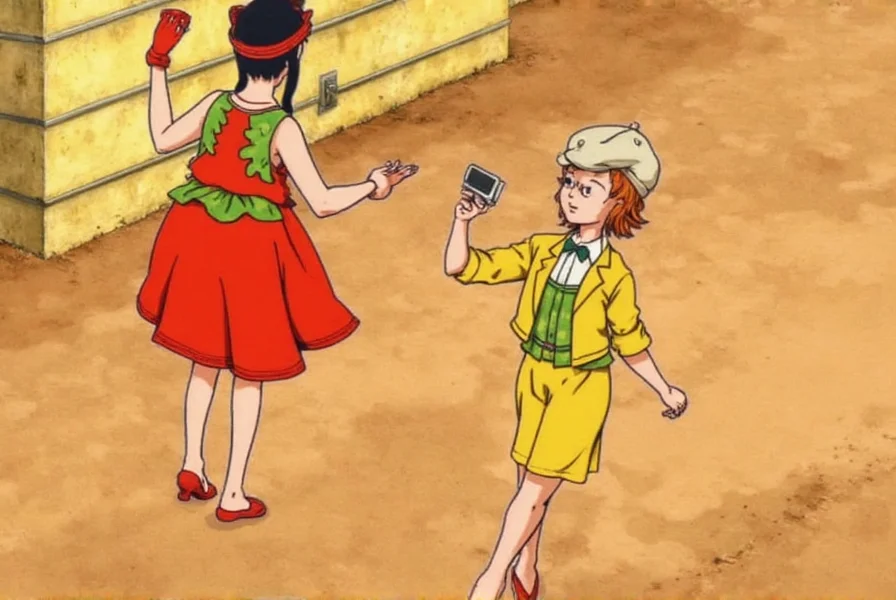When searching for "paprika 2006," you're likely looking for information about Satoshi Kon's groundbreaking animated feature film, not the spice. This distinction is crucial as many initial search results might confuse the culinary ingredient with the cinematic masterpiece. The film represents the culmination of Kon's visionary approach to animation and storytelling, blending surreal imagery with profound psychological themes.
The Significance of Paprika in Animation History
Paprika 2006 occupies a unique position in animation history as one of the final completed works by director Satoshi Kon before his untimely death in 2010. The film adapts Yasutaka Tsutsui's 1993 novel of the same name, transforming its complex narrative about dream invasion technology into a visually stunning experience. Unlike conventional animated features, Paprika doesn't shy away from challenging psychological concepts, instead embracing them through innovative animation techniques that push the boundaries of the medium.
Technical Innovation and Artistic Vision
The animation studio Madhouse executed Kon's vision with remarkable precision, creating seamless transitions between reality and dreams that remain technically impressive even by today's standards. The film's color palette shifts dramatically between these states, with reality depicted in muted tones while dreams explode with vibrant, almost hallucinogenic visuals. This visual language serves the narrative purpose of distinguishing psychological states while creating an immersive experience for viewers.
One of Paprika 2006's most celebrated sequences—the parade of discarded objects—demonstrates Kon's ability to transform abstract concepts into compelling visual storytelling. This scene, where everyday objects come to life in a surreal procession, has influenced numerous filmmakers and animators worldwide. The technical execution required meticulous frame-by-frame animation that showcased the team's dedication to their craft.
| Production Detail | Information |
|---|---|
| Japanese Release Date | May 28, 2006 |
| Director | Satoshi Kon |
| Studio | Madhouse |
| Runtime | 90 minutes |
| Original Language | Japanese |
Cultural Impact and Legacy
Paprika 2006's influence extends far beyond the anime community. Many film critics and scholars have noted its clear influence on Christopher Nolan's "Inception," though Nolan has cited other inspirations as well. The film's exploration of dream manipulation technology anticipated real-world developments in neuroscience and virtual reality that continue to evolve today.
For animation enthusiasts seeking to understand Satoshi Kon's filmography, Paprika represents the director's most technically ambitious work. It follows his previous films "Perfect Blue," "Millennium Actress," and "Tokyo Godfathers," each demonstrating Kon's growing mastery of the medium. Unlike his earlier works which often focused on single protagonists, Paprika weaves multiple character perspectives into a cohesive narrative about the collective unconscious.
Where to Experience Paprika 2006 Today
Film enthusiasts interested in viewing Paprika can find it on several streaming platforms including Crunchyroll, HIDIVE, and occasionally Netflix depending on regional availability. For collectors, the film has been released on Blu-ray with both Japanese and English audio options, featuring director commentary and production art that provides deeper insight into Kon's creative process.
Academic institutions frequently screen Paprika 2006 as part of film studies curricula, particularly in courses examining animation as a serious art form or exploring psychological themes in cinema. Film festivals dedicated to animation often include Paprika in retrospectives of Satoshi Kon's work, sometimes accompanied by discussions with animators who cite the film as influential to their own careers.
Understanding Paprika's Enduring Relevance
Fifteen years after its release, Paprika 2006 remains remarkably prescient in its exploration of technology's impact on consciousness. As society increasingly interacts with virtual environments and augmented reality, Kon's warnings about the blurring lines between digital and physical experiences feel more relevant than ever. The film's examination of how technology can be weaponized against mental health resonates with contemporary concerns about social media and digital addiction.
For those exploring Satoshi Kon's complete filmography, Paprika serves as both a culmination of his artistic journey and a bridge to the unrealized projects cut short by his passing. Understanding the film's context within Kon's body of work reveals patterns in his exploration of identity, perception, and the fragile boundaries between reality and imagination.
Is Paprika 2006 related to the spice of the same name?
No, Paprika 2006 refers exclusively to the Japanese animated film directed by Satoshi Kon. The title shares a name with the spice but has no connection to it. The film's title comes from the novel it adapts, where "Paprika" is the codename of the protagonist's dream persona.
How does Paprika 2006 compare to Inception?
While both explore dream manipulation, Paprika 2006 predates Inception by three years and approaches the concept from a distinctly Japanese animation perspective. Paprika focuses more on the psychological and emotional aspects of dreams, while Inception emphasizes structured dream layers and heist mechanics. Many critics note Paprika's influence on Nolan's work, though direct connections remain speculative.
Why is Paprika considered significant in animation history?
Paprika represents a technical and narrative achievement in hand-drawn animation, featuring seamless transitions between reality and dreams that pushed the medium's boundaries. It stands as one of Satoshi Kon's most influential works, demonstrating how animation can tackle complex psychological themes while maintaining visual sophistication. The film's innovative techniques have inspired countless animators worldwide.
Where can I legally watch Paprika 2006 online?
Paprika is available on several legitimate streaming platforms including Crunchyroll, HIDIVE, and occasionally Netflix depending on your region. For physical media, the film has been released on Blu-ray with both Japanese and English audio options through companies like Sony Pictures Entertainment. Always verify current availability as licensing agreements change over time.
What was Satoshi Kon's role in creating Paprika 2006?
Satoshi Kon served as director, screenwriter, and co-producer for Paprika 2006. He adapted the screenplay from Yasutaka Tsutsui's novel, significantly reworking the narrative structure to suit animation. Kon oversaw all creative aspects of production, from storyboarding to final animation, making Paprika a definitive expression of his artistic vision before his passing in 2010.











 浙公网安备
33010002000092号
浙公网安备
33010002000092号 浙B2-20120091-4
浙B2-20120091-4